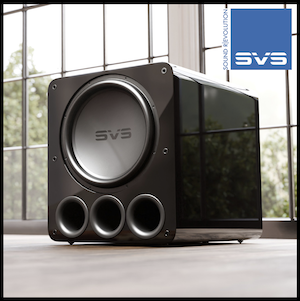(May 5, 2019) Room Correction has become a major focus in the home theater and 2-channel space, and Anthem just made a serious move to keep its “Anthem Room Correction” horse in the race. Days ago, the company officially launched the third iteration of its regarded correction suite. Designated as “ARC Genesis,” Anthem has made its ARC platform more accessible, more powerful, and easier to use.
Designed using research from the National Research Council of Canada, Anthem engineers have left no stone unturned, delivering a complete and modern correction package to owners of eligible products sold by Anthem, Paradigm, and MartinLogan. Access has now been opened to both PC and Mac users, with connection options ranging from USB, Wi-Fi, Ethernet, and Bluetooth. According to Anthem, ARC Genesis’s accessibility is complimented by a simple to use interface that guides owners through a logical workflow with support for multiple languages. And with the included "Demo Mode," the software’s functionality can be explored and simulated without an ARC-compatible product on hand.
ARC Genesis provides the ability to store up to four different sets of measurements allowing owners to compensate for variable room conditions (think retractable movie screens), while also allowing for four different profiles linked to specific inputs for accommodation of varied listening scenarios (multi-channel vs full-range 2-channel, for example). Speaking of inputs, Genesis allows users to configure amp channels for certain products (e.g., Anthem’s MRX receivers and AVM pre/pros) within the software, making install faster and easier.
Other new features include:
- Software refinements that automatically select crossover points, analyze room gain, and calculate target curves.
- A "Professional Mode" that provides access to adjustable whole-system target curves using room gain, deep bass boost, and tilt controls.
- The ability to adjust target frequencies from speaker to speaker, across 20Hz to 20kHz.
- A "Remeasure" features that allows owners to integrate new speakers and adjust a target curve without revisiting the entire correction process.
- Enhanced graph and curve viewing tools.
- Cross platform compatibility between Mac and PCs, automatic backup and restore features, and a universal PDF export tool.
- A revamped "Quick Measure" tool that that delivers the power of an RTA audio analyzer, allowing for a continuous series of tone sweeps with instant access to acoustic curve and SPL levels in real time.
- Software controlled bass management for some Anthem MRX, AVM, and STR products.
Complete product compatibility for Anthem, Paradigm, and MartinLogan products, includes:
- AVM 60
- MRX Gen 2 (710 / 510 / 310)
- MRX Gen 3 (1120 / 720 / 520)
- STR Integrated / Preamplifier
- Defiance V12 / V10
- Defiance X15 / X12 / X10
- Millenia SUB
- Persona 9H / SUB
- PW 800 / 600 / AMP / LINK / Soundbar
- Seismic 110
- Soundplay
- X-850
- BalancedForce 212 / 210
- Bravado / Cadence / Forte / Unison / Verse
- Dynamo 1500X
- Dynamo 1600X / 1100X / 800X / 600X
- Expression ESL 13A
- Illusion ESL C34A
- Impression ESL 11A
- Renaissance ESL 15A
ARC Genesis is available for download free of charge. For more information, visit AnthemARC.com on the web.
Last edited by a moderator:









